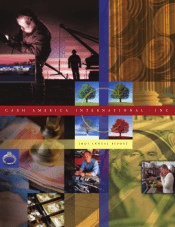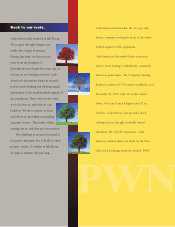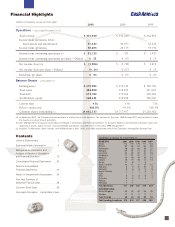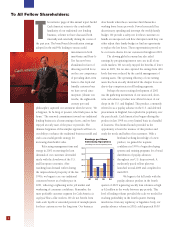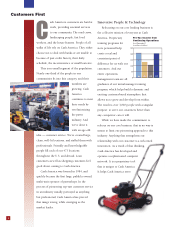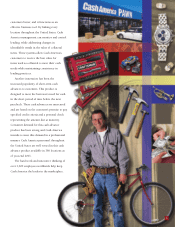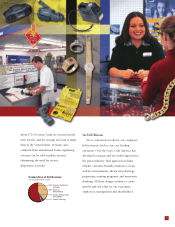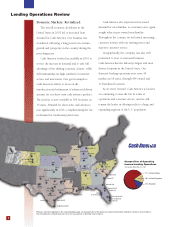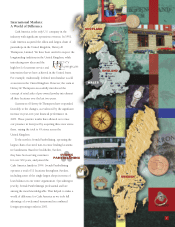Cash America 2001 Annual Report Download - page 4
Download and view the complete annual report
Please find page 4 of the 2001 Cash America annual report below. You can navigate through the pages in the report by either clicking on the pages listed below, or by using the keyword search tool below to find specific information within the annual report.
2
he narrative pages of this annual report herald
Cash America’s return to the comfortable
familiarity of our traditional core lending
business, a theme we have discussed both
internally and externally during the course of
the past year. The broad-based diversification strategy
adopted in the mid-90s leading to unsuccessful
investments in both
innoVentry and Rent-A-
Tire has now been
abandoned in favor of
directing our full focus
on the core competency
of providing short-term
loans to that loyal and
friendly customer base
we have served since
inception. Johann von
Goethe, the eighteenth-
century poet and
philosopher, captured our sentiment when he wrote, “He
is happiest, be he king or peasant, who finds peace in his
home.” The renewed commitment toward our traditional
lending business is a homecoming of sorts, and we have
enjoyed an early taste of the peace it provides. The
ultimate happiness of this simpler approach will rest on
our ability to enhance the traditional business model and
craft a successful growth strategy for
increasing shareholder value.
Refocusing management time and
energy in 2001 on meeting the loan
demands of our customers dovetailed
nicely with the slowdown of the U.S.
and European economies. After
watching loan demand wither during
the unprecedented prosperity of the late
1990s, we began to see our traditional
customers borrow at a brisker pace in
2001, reflecting a tightening in the job market and
weakening of consumer confidence. Remember, the
most profitable customer segment for Cash America is
employed blue-collar workers. We do not benefit from
wide-scale layoffs or extended periods of unemployment
for these customers over the long term. Our business
does benefit when these customers find themselves
working fewer hours per week. Fewer hours yield less
discretionary spending and interrupt the weekly family
budget. We provide a safety net for these customers to
handle an unexpected cash flow disruption until they can
either adjust their family budget or find an opportunity
to replace the lost hours. Those opportunities proved to
be ever more elusive for our customers throughout 2001.
The slowing global economy has also aided
earnings by precipitating interest rate cuts in all of our
credit markets. We not only enjoyed the benefits of lower
rates in 2001, but we also captured the savings from debt
levels that were reduced by the careful management of
earning assets. The operating efficiency of our earning
assets has been an early dividend of the sharper focus on
day-to-day competencies in all lending segments.
Perhaps the most exciting development of 2001
was the gathering momentum of our unsecured, short-
term cash advance product now offered in most of our
shops in the U.S. and England. This product, commonly
referred to as a payday advance in the U.S. and deferred
presentment in England, has exploded in popularity over
the past decade. Cash America first began offering this
product in late 1998 on a very limited basis in a handful
of locations. This limited launch provided us the
opportunity to learn the nuances of this product and
study the needs and habits of its customers. With a
firsthand working knowledge of a new
product, we gained the requisite
confidence in 1999 to begin developing
systems and training programs for a broad
distribution of payday advances
throughout our U.S. shop network. A
moderately paced rollout plan was
launched in mid-2000 and completed in
mid-2001.
We began to hit full stride with the
payday advance product in the fourth
quarter of 2001 registering weekly loan volumes as high
as $2 million in the weeks between pay periods. This
level of lending volume provided the scale we needed for
reaching profitability in the fourth quarter. Barring
interference from any regulatory or legislative body, our
payday advance volume in 2002 could approach $100
To All Fellow Shareholders:
T
Earnings per Share
Continuing Operations
(excluding unusual non-operating items)
0
$0.05
00
Q1 Q2 Q3 Q4
01 00 01 00 01 00 01
$0.15
$0.10
$0.20
$0.25

